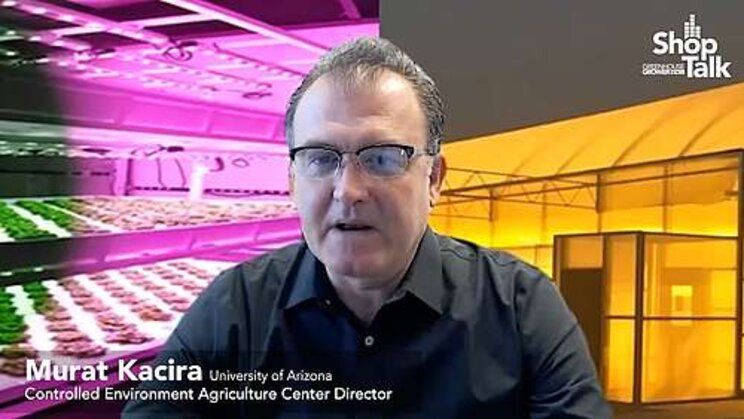Where greenhouse crop lighting is headed in the future
Added on 15 November 2021

The program takes place on November 18; click here to sign up.
Here's an overview of what you can expect:
"Plants as sensors" The operational costs and resource-use efficiency of greenhouse and indoor vertical farming systems can be improved by appropriate production-system design modifications for key technologies and control strategies while considering the crop-specific minimum environmental requirements. Plants will speak to you once you embrace technology and listen to the data. Non-contact sensing-based crop health and growth monitoring is desirable for practical ad crop centric environmental control. Soft sensors based on crop energy balance can help improving environment control. Murat Kacira of the University of Arizona will showcase an autonomous computer vision-guided plant sensing and monitoring system that can help to continuously monitor temporal, morphological, and spectral features of crops, providing timely information about their health and growth status.
"The benefits of software models for light control" Optimal control of horticultural supplemental lighting systems has many benefits, ranging from improved growth and uniformity to reduced electricity consumption and/or cost. However, the process of optimizing a control strategy is usually not easy, with many growers using industry standard recommendations that may be tweaked with individual experience. To make the process of coming up with optimal control setpoints easier, GLASE has developed an online tool. Online LASSI provides the user the ability to simulate how a lighting system will perform with climate data based on their zip code. By running multiple what-if? scenarios, the user can see how changing setpoints (or lighting systems characteristics such as supplemental lighting intensity) affects the performance of the system in terms of uniformity of light as well as the costs and electricity usage. Common control strategies such as intensity based and time clock control as well as the Cornell developed LASSI (Light and Shade System Implementation) can be simulated, along with shade control. Learn more from Tim Shelford at Cornell University.
"Realistic possibilities for vertical farming: separating science from fiction" One of the limiting factors opposing the widespread adoption of agriculture in closed controlled environments is the cost of energy. Electricity is required to run lights, but is also frequently required to remove the heat produced by associated electronics. The goal of this work tests the hypothesis that plants may be bred to excel in artificial environments, first by changing genetics and then by manipulating the environment in unorthodox ways. By analyzing seedling traits, we have identified genotypes with enhanced developmental sensitivity to light. These are being crossed and tested to pyramid sensitivities to different spectral qualities into one genotype. We have demonstrated that illuminating seedlings with short light pulses and extending the dark period can reduce energy without compromising end product. We are now testing these protocols in mature plants. By identifying low-energy environments and designing plants that fit them, these efforts may translate to enhanced grower profit and improved consumer products. Learn more from Kevin Folta at the University of Florida.
Click here to read more.
Source: Greenhouse Grower
More news















